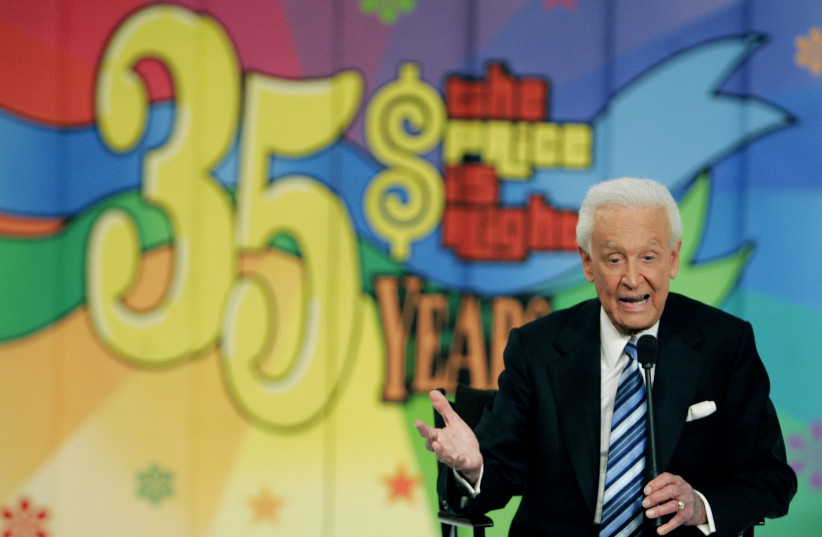Blinking could provide clues to human response under stress
By analyzing the behavior of politicians and game show contestants, researchers can study human physiology under conditions of stress that would be impossible to reproduce in the lab.
When in a high-stress, high-stakes environment like a contestant on a quiz show or a politician giving a press conference at a critical time is forced to answer rapid-fire questions, they behave differently than others.
By analyzing their behavior and patterns of blinking, researchers can study human physiology under conditions of stress that would be impossible to reproduce in the lab.
TV game shows have proven to be a valuable resource for studying human behavior under high stress conditions with money, prestige, or power at stake. However, previous work has focused mostly on choices that ignored much of the rich visual information available on screen.
Host Bob Barker answers questions on stage at a news conference after the taping of his final episode of the game show ''The Price Is Right'' in Los Angeles June 6, 2007 (credit: REUTERS/FRED PROUSER FSP)Studying human behavior through game shows
University of Arizona researchers watched contestants on the British TV show Mastermind who sat in a big leather chair, answering questions thrown at them under the glare of spotlights as a camera slowly zoomed in on their faces. The bright lights and slow camera work make it easy to identify blinks, and the stress of being interrogated on national TV cannot be re-created under lab conditions, he said.
National leaders and politicians on the defensive would have similar feelings as journalists demand quick answers at press conferences.
Cognition and neural systems Prof. Robert Wilson, a senior author, has just published his conclusions with his team under the title entitled “The Psychophysiology of Mastermind: Characterizing Response Times and Blinking in a High-stakes Television Game Show” in the journal Psychophysiology.
“This is a dream I've had for a long time—to try to get physiological information out of video signals,” Wilson said.
“This is a feasible method for doing video-based neuroscience in outside-the-lab conditions so that we can get into situations that are closer to real-world scenarios,” noted Skyler Wyly, the lead author of the study, who began this work as an undergraduate at the university and is now a doctoral student at Duke University in North Carolina.
How blinking is related to cognitive effort still needs to be explored, especially in real-world tasks, but he mentioned that there is a hypothesis that the more stressed humans are, the more they blink. “We are yet to know about all the cognitive processes that modulate blinking,” he added.
The more stressed you are, the more you blink
The researchers analyzed 25 episodes from two seasons of the game show to collect data from 100 contestants. A team of nearly 60 research assistants marked the onset and offset of every question and every response made by the contestants, as well as the time of every blink, all of which contributed to nearly 100,000 data points.
The researchers then analyzed the data to determine how blinking varied across individuals at different points in the game and compared their findings to those from less stressful experiments performed in previous lab-based studies.
One key finding from the lab is that blinking acts like a “punctuation of thought,” Wilson explained, and this result held true on TV. Contestants blinked at the “punctuation marks” of the game – at the start of each question and the start of their response.
They also reduced their blinking while they were thinking about how to answer, which is also in line with results from the lab, Wilson said. The stress of the quiz show was also noticeable from the contestants’ blinking, with their blink rate nearly twice the number of the usual 20 blinks per minute of a person who is at rest.
However, some findings differed from lab tests. For example, in the TV show, older adults blinked more than younger adults and women more than men. Wilson said there are no differences between these groups in the lab.
There were also some behavioral differences. In lab tests, people tend to slow down and respond more carefully and accurately after they make an error. In Mastermind, this was not the case.
The differences in results are the most exciting part
It's not clear what caused the differences between the lab and TV, but Wilson suggested that the differences are the most exciting part of the research. One of the biggest questions in psychology right now is how much of what is observed in the lab relates to what is going on in the real world.
“This question is critical, not only for our basic understanding of the mind but also more practically if we want to find lab tests that can diagnose mental illness,” Wilson said.
For the researchers at UArizona, blinks are just the beginning, and there is so much information in video signals, he continued. The way people look, breathe, and fidget in their seats can be pulled out by modern computer-vision techniques. This can help researchers get a multidimensional measure of physiology.
"This is exactly what we need to study – the psychophysiology of real human behavior and real human thinking,” Wilson concluded.



No comments:
Post a Comment
Stick to the subject, NO religion, or Party politics